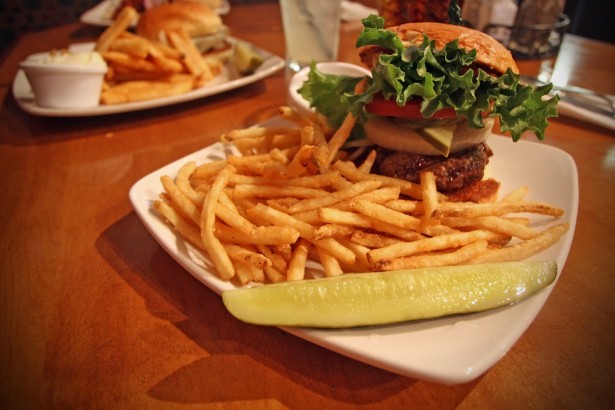How Many Fries is Too Many Fries?
[Editor’s Note: This is an opinion piece, and does not necessarily reflect the views of the entire Willistonian staff.]
I recently found myself incredibly frustrated by the overwhelming number of french fries on my plate. While the side dish is undeniably delicious, especially when accompanied by a squirt of ketchup, the addictiveness is far too overpowering. When I am served, I often find myself infatuated with the crispy texture and mouthwatering taste, distracting me from the main course, protein-filled burger.
My brother, Williston ’21 alum and current University of Michigan student, Nathan Shatz shared his thoughts in a recent interview. Whenever Nathan is home and we have the chance to grab dinner, we always discuss the overload of french fries that are served; it has become an inside joke.
“Whenever I order french fries, they come to me in uncomfortably large quantities,” Nathan said. “More often than not, I end up taking my french fries home or sharing them with the table. In my opinion, french fries should be served in quantities of 15 to 20. Everybody loves french fries, but nobody wants to fill up on them. I think that food providers should be more transparent with the size of their servings before putting it on my plate. It’s just a waste.”
Our mutual disgust with french fries’ serving sizes extends to the cultural issue of American food portions. With over 70% of the United States population overweight, one cannot help but ponder this correlation to restaurant food servings. According to USA Today, “Following World War II, agricultural policy in the U.S. expanded. Farmers were able to grow food more cheaply by using fertilizer, pesticides and herbicides. In the 1970s, the government began subsidizing farmers to grow more food. Over time, companies have increased their serving sizes to increase their profits, and we all caught on.”
As it appears, the American food industry seems to prioritize profit margins over consumer health. The National Heart, Lung, and Blood Institute further explores these progressive size increases.
“Food portions in America’s restaurants have doubled or tripled over the last 20 years, a key factor that is contributing to a potentially devastating increase in obesity among children and adults… In one day, you would consume 1,595 more calories than if you had the same foods at typical portions served 20 years ago. Over the course of one year, if consumed daily, the larger portions could amount to more than 500,000 extra calories.”
Restaurants and large food corporations are becoming less and less humane when it comes to their services. Rather than prioritizing the health and overall safety of customers, the restaurant industry has become a competition of providing the greatest bang for one’s buck: who can supply the largest sizes for the lowest price, therefore, attracting the most business?
International Williston student, Peter Wang ’23, shared his comparison of food servings within the United States to that of Hong Kong.
“I think the food portions in the US are not as drastic as everyone thinks, but coming from Hong Kong, [they] definitely have some bigger food portions,” Peter said. “For example, in American McDonalds’, there’s an option to choose a small or large or extra-large meal, whereas in Hong Kong, all the meals are served the same size to everyone.”
These astonishing size differences are not only observed in Hong Kong but appear to be a global commonality. In the United Kingdom, a medium-sized fountain drink at McDonalds is served in a 400ml cup compared to the United States’ 621ml cups.
And finally, but certainly not least, the beloved french fries. A large serving of fries at McDonalds in the UK contains roughly 130 grams of deep-fried potato. In the US, the same portion contains roughly 190 grams; an almost 50% increase.











